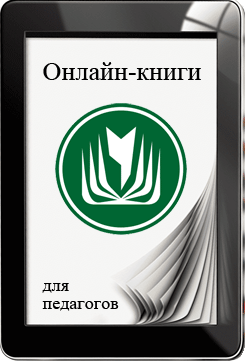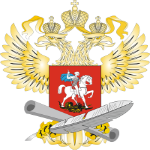Животный мир
Text 1.
Words:
friendly easily mammals insect
weight warm seas skin sharp
smile cold seas fur claws
intelligent groupsreptiles trunk
whiskers
They are mammals, have babies and feed them on milk. They are not fish, but they live in water. They can swim very well. They haven’t got legs. They’ve got grey skin and a big smile. Fins and a tail help them to swim. They weigh from seventy to five hundred kilos.
They are very intelligent animals. They can easily learn how to play games and are very friendly to people.
They live in warm seas in many different parts of the world. They live in small groups and they eat fish. They live for about fifty years.
Questions:
1.What kind of animal are they?
2.Where do they live?
3. What can they do very well?
4.What do they eat?
5.How big are they?
6.What have they got?
7.How long do they live?
Приложение 2
Text 2.
Words:
lay eggs cold water weigh insect
thick feathers funny skin sharp
warm water ice fur claws
mammal wings reptiles trunk
whiskers
They lay eggs and they’ve got wings, so they are like other birds, but they can’t fly! They can swim very well, though. They are black and white, and they’ve got small wings, very short legs and a short tail. They’ve also got thick feathers to keep them warm in cold water. They weigh about twenty kilos.
They look funny when they walk. However when they are in the water, they swim like fish.
They live on the ice of Antarctica and in the sea around it, in big groups and eat fish. They live for about twenty years.
Questions:
1.What kind of animal are they?
2.Where do they live?
3. What can they do very well?
4.What do they eat?
5.How big are they?
6.What have they got?
7.How long do they live?
Приложение 3
Text 3.
Words:
mammalpouch
weigh feed
groupscarry
They are mammals, have babies and feed them on milk .They live in Australia. They are about two metres tall and weigh about sixty kilos, have got two back legs, two short front legs and a long tail. They can jump very high because their back legs are very strong. They sleep during the day and they eat leaves. They carry their babies in a pouch. They live in small groups. They live for about fifteen to twenty years.
Questions:
1.What kind of animal are they?
2.Where do they live?
3. What can they do very well?
4.What do they eat?
5.How big are they?
6.What have they got?
7.How long do they live?
Приложение 4
1.Read these sentences and mark them as T(true) or F (false)
1. Dolphins are mammals. _______________
2. Dolphins live in water. ________________
3. Dolphins have got grey fur. ________________
4. Dolphins eat fish. ________________
5. Penguins haven’t got wings. ________________
6. Penguins can fly. ________________
7. Penguins live in Antarctica. ________________
8. Penguins live for about ten years. _________________
2.Choose words from the list to fill in the gaps, then use them to make sentences.
lay, short, intelligent, keep, have, big, warm, look, parts, thick
1.___________________________ animals
2.___________________________feathers
3. a__________________________ tail
4. a__________________________ smile
5. in ___________________________ seas
6. _____________________________of the world
7. to ___________________________ them warm
8. to ____________________________funny
9. to ____________________________eggs
10. to ___________________________babies
3.Fill the missing prepositions.
1. Dolphins feed their babies _________ milk.
2.They weight_________ 70 __________ 500 kilos.
3. Dolphins are friendly _______________people.
4.They live __________________ warm seas.
5. They live _________________about fifty years.
6. Penguins live _______ the ice ___________ Antarctica.
7.They live ________________ big groups.
Приложение 5
4. Listen to the animals noises and tick (V) the animals you can hear. Which of them are wild animals and which are farm animals?
Example: I can hear a hen. Hens are farm animals.
I can’t hear a crocodile. Crocodiles are wild animals.
a hen a crocodile a horse a monkey
a lion a tiger a parrot a kangaroo
a cow a snake a sheep a penguin
Приложение 1
Text 1.
Words:
friendly easily mammals insect
weight warm seas skin sharp
smile cold seas fur claws
intelligent groups reptiles trunk
whiskers
They are mammals, have babies and feed them on milk. They are not fish, but they live in water. They can swim very well. They haven’t got legs. They’ve got grey skin and a big smile. Fins and a tail help them to swim. They weigh from seventy to five hundred kilos.
They are very intelligent animals. They can easily learn how to play games and are very friendly to people.
They live in warm seas in many different parts of the world. They live in small groups and they eat fish. They live for about fifty years.
Questions:
1.What kind of animal are they?
2.Where do they live?
3. What can they do very well?
4.What do they eat?
5.How big are they?
6.What have they got?
7.How long do they live?
Приложение 2
Text 2.
Words:
lay eggs cold water weigh insect
thick feathers funny skin sharp
warm water ice fur claws
mammal wings reptiles trunk
whiskers
They lay eggs and they’ve got wings, so they are like other birds, but they can’t fly! They can swim very well, though. They are black and white, and they’ve got small wings, very short legs and a short tail. They’ve also got thick feathers to keep them warm in cold water. They weigh about twenty kilos.
They look funny when they walk. However when they are in the water, they swim like fish.
They live on the ice of Antarctica and in the sea around it, in big groups and eat fish. They live for about twenty years.
Questions:
1.What kind of animal are they?
2.Where do they live?
3. What can they do very well?
4.What do they eat?
5.How big are they?
6.What have they got?
7.How long do they live?
Приложение 3
Text 3.
Words:
mammal pouch
weigh feed
groups carry
They are mammals, have babies and feed them on milk .They live in Australia. They are about two metres tall and weigh about sixty kilos, have got two back legs, two short front legs and a long tail. They can jump very high because their back legs are very strong. They sleep during the day and they eat leaves. They carry their babies in a pouch. They live in small groups. They live for about fifteen to twenty years.
Questions:
1.What kind of animal are they?
2.Where do they live?
3. What can they do very well?
4.What do they eat?
5.How big are they?
6.What have they got?
7.How long do they live?
Приложение 4
1.Read these sentences and mark them as T(true) or F (false)
1. Dolphins are mammals. _______________
2. Dolphins live in water. ________________
3 . Dolphins have got grey fur. ________________
4. Dolphins eat fish. ________________
5. Penguins haven’t got wings. ________________
6. Penguins can fly. ________________
7. Penguins live in Antarctica. ________________
8. Penguins live for about ten years. _________________
2.Choose words from the list to fill in the gaps, then use them to make sentences.
lay, short, intelligent, keep, have, big, warm, look, parts, thick
1.___________________________ animals
2.___________________________feathers
3. a__________________________ tail
4. a__________________________ smile
5. in ___________________________ seas
6. _____________________________of the world
7. to ___________________________ them warm
8. to ____________________________funny
9. to ____________________________eggs
10. to ___________________________babies
3.Fill the missing prepositions.
1. Dolphins feed their babies _________ milk.
2.They weight_________ 70 __________ 500 kilos.
3. Dolphins are friendly _______________people.
4.They live __________________ warm seas.
5. They live _________________about fifty years.
6. Penguins live _______ the ice ___________ Antarctica.
7.They live ________________ big groups.
Приложение 5
4. Listen to the animals noises and tick (V) the animals you can hear. Which of them are wild animals and which are farm animals?
Example: I can hear a hen. Hens are farm animals.
I can’t hear a crocodile. Crocodiles are wild animals.
a hen a crocodile a horse a monkey
a lion a tiger a parrot a kangaroo
a cow a snake a sheep a penguin
- Международный вебинар «Обучение грамоте старших дошкольников с помощью развивающих игр В. В. Воскобовича: практика реализации ФГОС и ФОП ДО»
- Вебинар «Социально-коммуникативное развитие детей дошкольного возраста в условиях реализации ФОП ДО и обновлённого ФГОС ДО»
- Международный вебинар «Волонтёрство и новые воспитательные практики в школе»
- Вебинар «Кинезиологические игры и упражнения в развитии психических процессов дошкольников»
- Международный вебинар «Цель и преимущества использования ТРИЗ-технологии в дошкольном образовании в условиях реализации ФОП ДО»
- Психология профессионального образования: общая характеристика






